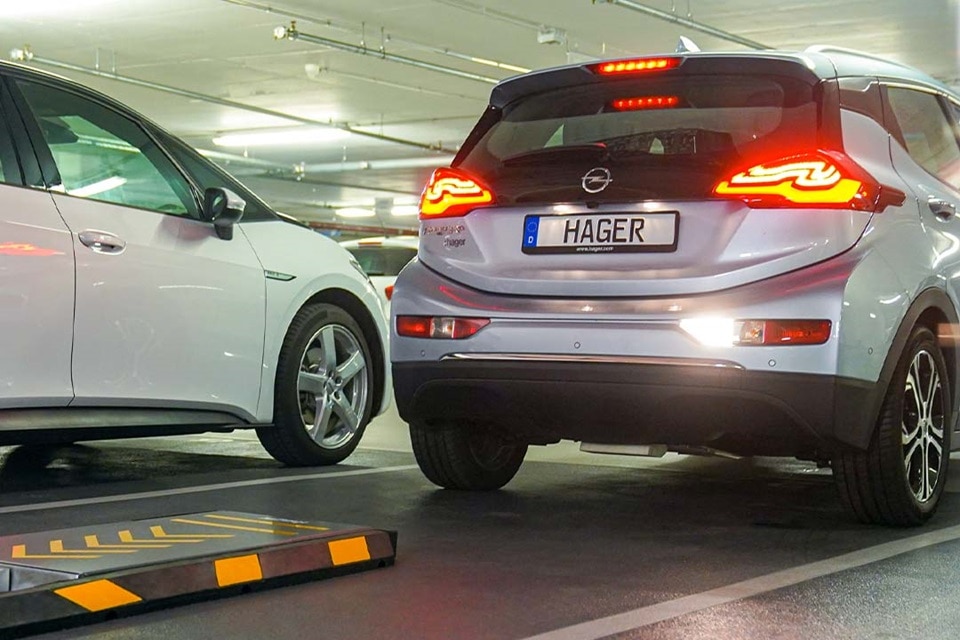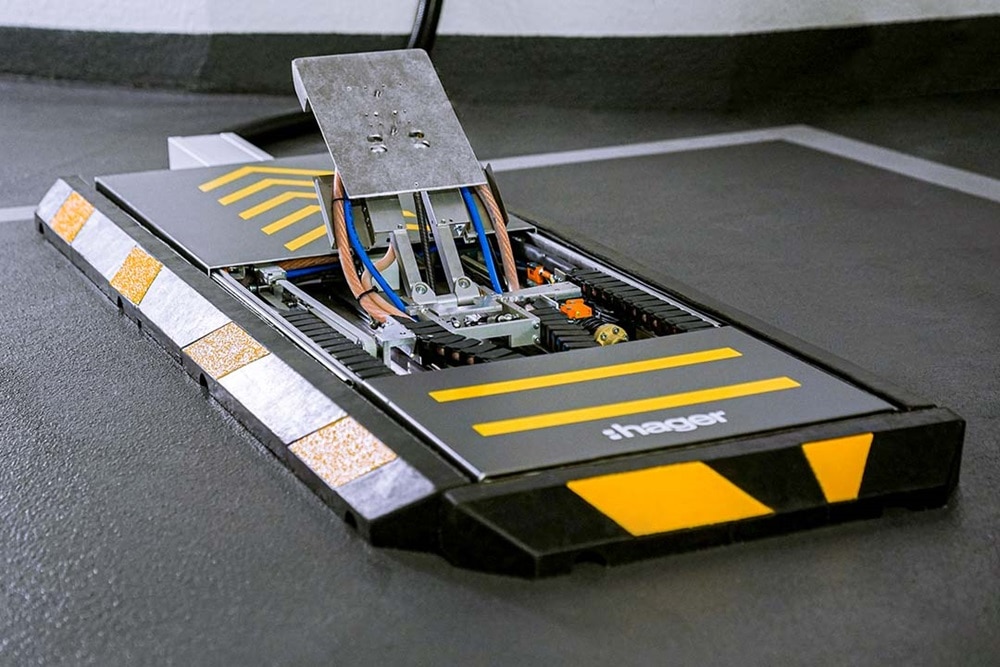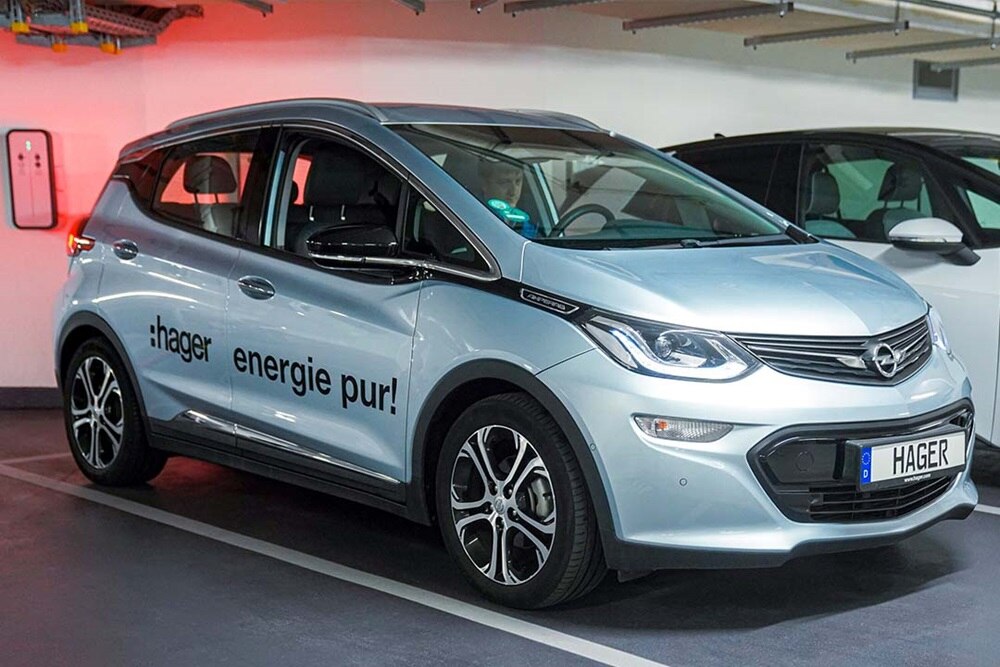Hager acs: Automatic charging made easy

Intelligent energy management thought further
In 2018 Hager developed a now widely used intelligent charging system - the energy management system “ flow”: an energy storage unit receives energy from a photovoltaic system, it is managed byan energy manager and e-cars can be charged via the charging station.
03:07

The Hager acs components

The head of the arm is flexibly mounted, thereby aligning itself independently and automatically adapting to the height of the vehicle. With its 8 - 24 cm clearance, it works well with all types of vehicles - and not only when electricity is involved. In principle, the modular plug-in system can also be equipped for hydrogen to refuel cars with fuel cells. When it is not in use, a removable cover protects the ground station from dirt and water.
Attached to the vehicle itself is a connector that requires hardly any installation space and is easy to integrate and mount. It is available in two versions: passive or active. The active connector is movable and can be electrically extended from the underbody. This makes a suitable connector suitable for any type of vehicle, from sports cars to commercial vehicles.
Useable in private and public spaces

Partners wanted: widespread use desired

The development is already far advanced and can be demonstrated to automotive sector companies. Interested? Please contact our colleague Ulrich Reiner.

